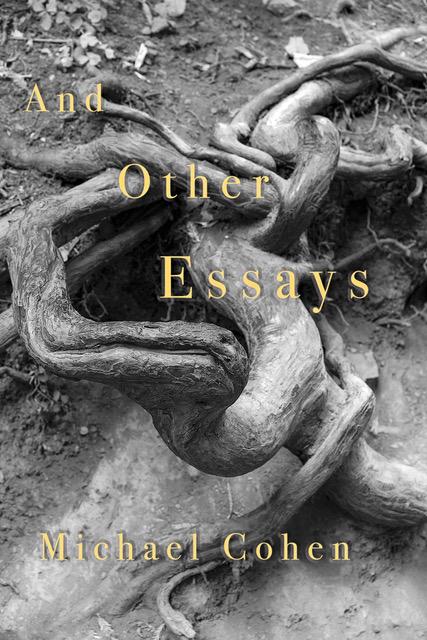I just
finished Michel Serres, Variations on the
Body (1999; translated by Randolph Burks 2011). This was a difficult book
for me at times because I often resisted Serres’ counterintuitive attempts to
valorize the body at the expense of the mind and further to argue that the body
acquires knowledge, and creates culture. Ultimately, though, he convinced me of
the limited truth of these propositions.
In the first section, “Metamorphosis,”
Serres uses his own experience rock-climbing to argue the importance of a fit,
athletic body in doings we normally think of as more intellectual or at least
mental and spiritual rather than physical: writing, for example (“the genuine
writer’s craft demands a solitary engagement from the entire body.” And
further, “exercise, a rather austere diet…practices of strength and
flexibility…for writing, are as good as ten libraries”). And he makes the claim
that “human intelligence can be distinguished from artificial intelligence by
the body, alone,” and that the body is the origin of mystical states (“During a
few ascents of the Écrins Massif…I was suddenly inundated…with such a lofty
elation…that I thought my entire body was levitating. Saint Theresa of Avila,
Saint Francis of Assisi [had] athletic bodies.” “Saintliness follows health,”
he asserts, and “creation does not arise from torpor...but from training”).
He also
discusses the uses of fear in pursuing an activity that involves risk. Fear can
be indulged beforehand, he says (though he does not mention it encourages
careful planning) but has no business in the moment, when others’ lives may
depend on you, because it paralyzes.
In
“Potential,” Serres poses the question “Who knows what the body can do?” About
pain, he observes that “suffering tests the limits of the body in the same way
as does exercise….I am initially what pain has made of my body; only…long
after, am I what I think.” About the way
muscle memory works, “the body performs certain gestures all the more easily
when they unfold from the least amount of attention possible….the body…doesn’t
like consciousness, and the feeling is mutual.” “To inhabit your body better,”
he says, “forget it….Health is unknowingness” and “smooth and even
equilibrium…divine unconsciousness.” Freedom is defined by the body: “all power
must…stop short of the body’s integrity” and leave it free to move as it
pleases….Its virtuality is thus opposed to all power. Freedom is defined by the
body and the body by potential.”
Children
understand fables about animals as transformations of which the young organism
is capable; thus the story of Merlin showing young Arthur the world as seen
through the eyes and skin or scales of various creatures. In youth, in love, in
understanding we are transformed into and see things as the other. The
Incarnation, says Serres, “signifies that the flesh conceals a mystery.” Sleep
is an interesting phenomenon: “falling asleep passes into the potential.”
In
“Knowledge” Serres revises the Enlightenment formula that all knowledge comes
through the senses to read “there is nothing in knowledge that has not been
first in the entire body.” The infant mimics and thus learns through the body.
Such imitation implies violence: “you suddenly find yourself taking the very
place of the person you were copying.” Serres criticizes the educational
doctrine that you can’t learn what you don’t understand, saying it is
contradicted in learning addition and immensely more.
Things,
says Serres, imitate each other. And true knowledge is not an abstraction from
a singularity but a copy of it; though humans need general ideas, God who knows
all individuals doesn’t. The performer is a model of the teaching body. “Speak
then for several minutes before a crowd to learn how much these discreet but
not mute gymnastics protect you from the virtual lynching promised by the
cooperation of the pack whose silent eyes converge on your lips.” Serres
discounts the idea of innate knowledge: “long history improves imitation slowly…and
made the body an ensemble of memories so well-engrammed that certain
philosophers even believed—and believe still—in the innate origin of knowledge
and language.” He talks about how physical and mental exercise retard aging.
In
“Vertigo” Serres points out that the wonder of bipedal motion involves
movements like those of wheels. Standing upright and trying to walk that way,
for infants or the first primates who did it, was vertiginous. The body
interacts with its environment, breathing and eating it. We absorb and
subjectivize the world in maintaining the body, while the body then exudes,
creates and objectifies culture, making the world. In a strain of Catholic
symbolism already apparent in the previous Incarnation reference, Serres here
links this interchange of body and surroundings to Transubstantiation. Later he
compares the death of the body to the Ascension of Christ.
Vertigo
may be more than learning, but also play: Roger Callois calls some games
“Ilinx” or whirlpool games. Like gyrocompasses that become stable by being
whirled, “do we owe our best balance” to whirlwinds? “Yes, rapid and unexpected
rotations improve equilibrium.” Ataraxia, on the other hand, the desired
“absence of agitation” of the “sages of Antiquity” would be a life-shortener;
the body thrives on variation, instability.
The
concluding, synoptic example of the book is Archimedes’ discovery how his body
displaces an equal weight of water in his bath, so that he floats, slightly
vertiginous, and then leaps out, running through the streets, baring his naked
body that is the instrument of his eureka moment, the acquirer of knowledge in
motion and rest, instability and equilibrium.
